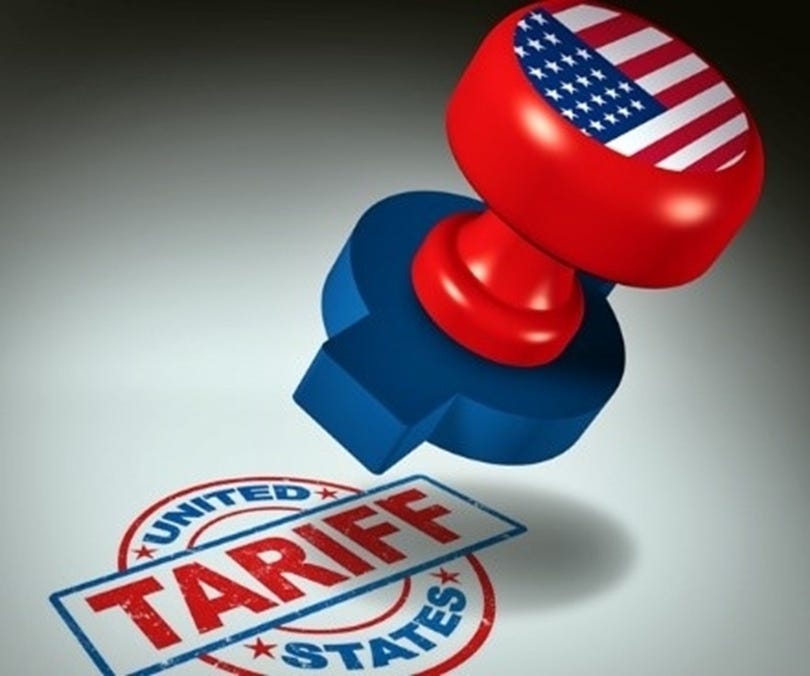Trump’s Tariffs Are Building BRICS — Not America
Donald Trump’s revived “America First” economic agenda isn’t just an isolationist policy in the making — his aggressive tariff strategy could become the catalyst for a dramatic global trade realignment, one that sees countries distancing themselves from the United States and moving closer to the BRICS bloc of emerging economies.
The reimposition of steep tariffs on Chinese goods in early 2025, combined with threatened levies on European automobiles, metals, and agricultural products, marks both a continuation and escalation of Trump’s first-term trade playbook. However, the global landscape has shifted considerably since 2017.
While Washington retreats into protectionism, BRICS — now expanded to include Saudi Arabia, the UAE, Egypt, and others — is asserting itself not only as an economic alternative but as a political counterweight to US-led global governance.
The world is no longer tolerating US economic coercion as it once did. Trump’s tariff revival may prove to be the tipping point that drives middle-power countries away from Washington and toward a multipolar order symbolised by BRICS.
Central to Trump’s rationale is the belief — widely echoed by his inner circle — that America’s trade deficit stems from other countries “ripping off” the US through unfair practices. But this view is widely discredited among economists. Experts like Nobel laureate Paul Krugman and international institutions like the IMF and World Bank argue that trade deficits are not inherently harmful and are primarily driven by domestic macroeconomic conditions.
Trade deficits reflect factors such as low national savings rates, high consumer demand, and the dollar’s global reserve currency status. One-sided trade deals are not the core issue. Trump's fixation on tariffs reveals a fundamental misunderstanding of these mechanisms.
Tariffs don’t fix trade deficits — they raise consumer prices, disrupt supply chains, and provoke retaliation. This was evident during Trump's first term when the US-China trade war led to higher costs for American consumers and businesses, while failing to significantly reduce the trade gap.
Meanwhile, the US federal deficit — now exceeding $37 trillion — is largely self-inflicted, driven by decades of tax cuts, costly wars, and stimulus programs. At the same time, global economic imbalances, such as overproduction in East Asia and underconsumption in the West, also contribute to America’s trade shortfalls.
Trump’s proposed “universal baseline tariff” of 10% across all imports, regardless of origin, is a blunt-force tool ill-suited to these deeply interconnected challenges. Instead of addressing the root causes, it risks alienating trading partners, undermining global institutions like the WTO, and accelerating the global shift away from dollar-dominated systems — a shift BRICS has actively encouraged.
BRICS, which began as an economic alliance, has expanded its reach and ambition. In recent years, it has moved to settle bilateral trade in local currencies, explore the development of a common currency, and create alternative lending mechanisms through the New Development Bank. These efforts aim to reduce reliance on Western-controlled systems such as the SWIFT network and the US dollar itself.
With Trump reviving tariff threats and continuing to use sanctions as a foreign policy lever, more countries — including traditional US allies — are reassessing their strategic alignments. The BRICS model, which emphasizes equality among member states and rejects economic coercion, is becoming more attractive to states seeking greater autonomy.
This trend is especially evident in Southeast Asia, Latin America, and Africa, where governments are increasingly engaging in trade and infrastructure partnerships outside the Western sphere. With the inclusion of major energy producers like Saudi Arabia and the UAE, BRICS' influence now extends into global energy pricing and financial flows.
As Joseph Stiglitz, another Nobel Prize-winning economist, said, “The USs' use of its economic power as a weapon has undermined global confidence in the system it built.” Trump's tariff strategy only reinforces that loss of trust.
By introducing a bizarre and unpredictable tariff policy — one that imposes blanket duties regardless of country or industry — Trump risks isolating the US from the very global economy it once shaped and led.
The European Union has already signalled it will respond with reciprocal measures if targeted by US tariffs. In Asia, countries are strengthening regional trade blocs like the Regional Comprehensive Economic Partnership (RCEP) and Comprehensive and Progressive Agreement for Trans-Pacific Partnership (CPTPP) — both of which exclude the US.
The irony is obvious: America isn’t being pushed out of the global order — it’s walking away. And the world is increasingly ready to move forward without it.
Trump’s self-imposed isolation carries consequences. As more countries shift to trade in yuan or the proposed BRICS currency, demand for the US dollar could decline, potentially undermining its long-held status as the world’s reserve currency. That, in turn, would raise borrowing costs for Washington — a dangerous outcome given its massive debt burden.
For Trump, tariffs remain a political tool — a rallying cry to protect American jobs and manufacturing. But the long-term effect of his strategy could be to accelerate the very decline in US global influence he claims to resist.
Tariffs make great headlines but terrible diplomacy. They punish consumers, provoke allies, and embolden rivals. In the end, the US may find that its greatest competitor isn’t China — it’s its own economic shortsightedness.
As BRICS grows in strength and appeal, Trump’s tariff policy will have global consequences — and is Washington prepared for the world it is helping to create.



Canada must look into BRICS. A much larger Trade Zone to use Canadian Currency.
The US may be opting out economically but at the same time maintaining military force directly in Yemen etc or by proxy (Israel etc). The forces these trigger can only combine to combust.